Cherelyn |
||||||||||||||||||||||||||||||||||
 |
 |
|||||||||||||||||||||||||||||||||
Set consists of: Knitted top with lace pattern, picot edges and A-shape. Size: S - XXXL Knitted head band with lace pattern and picot edges. Set is knitted in DROPS Belle.
DROPS 191-16 |
||||||||||||||||||||||||||||||||||
|
INFORMATION FOR PATTERN: GARTER STITCH (worked in the round): 1 ridge = 2 rounds. Knit 1 round and purl 1 round. PATTERN: Top: See diagrams A.1 to A.3. Choose diagram for your size (applies to A.1). Head band: See diagrams A.2 to A.4. Diagrams show all rows in pattern seen from the right side. DECREASE TIP-1 (applies to sides of body): Begin 3 stitches before marker thread and knit 2 together, knit 2 (marker thread is between these stitches), slip 1 stitch knitwise, knit 1, pass slipped stitch over stitch worked (= 2 stitches decreased). DECREASE TIP-2 (applies to armholes): Decrease inside A.2/A.3 in each side. All decreases are done from the right side. Decrease as follows before A.3: Begin 3 stitches before A.3: Knit 2 together and knit 1. Decrease as follows after A.2: Begin after A.2, knit 1, slip next stitch knitwise, knit next stitch, pass slipped stitch over stitch worked ---------------------------------------------------------- TOP: Worked in the round on circular needle up to armholes, then work front and back piece back and forth separately. BODY: Cast on 194-214-230-250-274-302 stitches on circular needle size 4 mm with Belle. Work 2 ridges in GARTER STITCH - see explanation above. Then knit 1 round. Work next round as follows: Insert 1 marker at the beginning of round (= in the side), * work 36-41-45-48-54-61 stitches in stocking stitch, A.1 (= 25-25-25-29-29-29 stitches), 36-41-45-48-54-61 stitches in stocking stitch *, insert 1 marker thread (= in the side) and work from *-* one more time. Continue pattern in the round like this. REMEMBER THE KNITTING TENSION! When piece measures 6-6-6-8-8-8 cm, decrease 1 stitch on each side of both marker threads - read DECREASE TIP-1 (= 4 stitches decreased). Decrease like this every 6 cm 6 times in total in each side = 170-190-206-226-250-278 stitches. When piece measures 38-39-40-41-42-43 cm, work in garter stitch over 20-22-26-28-30-32 stitches in each side (i.e. 10-11-13-14-15-16 stitches in garter stitch on each side of both marker threads), continue the remaining stitches in stocking stitch and A.1 as before. When 2 ridges have been worked in each side, work next round as follows: Cast off the first 3-4-6-7-8-9 stitches at the beginning of round for armhole, work the next 79-87-91-99-109-121 stitches as before, cast off the next 6-8-12-14-16-18 stitches for armhole, work the next 79-87-91-99-109-121 stitches as before and cast off the last 3-4-6-7-8-9 stitches for armhole. Cut the yarn. Work front and back piece back and forth separately. BACK PIECE: = 79-87-91-99-109-121 stitches. Continue as follows, i.e. work first row from wrong side: Work A.3 (= 7 stitches - NOTE: Begin on 2nd row in diagram and read diagram from left to right), work 20-24-26-28-33-39 stitches in stocking stitch, A.1 (= 25-25-25-29-29-29 stitches), 20-24-26-28-33-39 stitches in stocking stitch and finish with A.2 (= 7 stitches – NB: Begin on 2nd row in diagram and read diagram from left to right). Continue pattern like this. AT THE SAME TIME on first row from right side decrease 1 stitch in each side for armhole inside A.2 and A.3 - read DECREASE TIP-2 (= 2 stitches decreased). Decrease as follows in S, M, L and XL: Every 4th row (i.e. every other row from right side) 2-5-6-9 times in total in each side and in XXL and XXXL: Every other row (i.e. every row from right side) 13-18 times in total in each side = 75-77-79-81-83-85 stitches. When piece measures 53-55-57-59-61-63 cm (decreases for armholes are now done), cast off the middle 35-35-37-37-39-39 stitches for neck and finish each shoulder separately. Continue to cast off for neck at beginning of every row from neck as follows: Cast off 1 stitch 2 times = 18-19-19-20-20-21 stitches remain on shoulder. Continue until piece measures 56-58-60-62-64-66 cm and cast off by knitting from right side. Work the other shoulder the same way. FRONT PIECE: = 79-87-91-99-109-121 stitches. Continue as follows, i.e. work first row from wrong side: Work A.3 (= 7 stitches - NOTE: Begin on 2nd row in diagram and read diagram from left to right), work 20-24-26-28-33-39 stitches in stocking stitch, A.1 (= 25-25-25-29-29-29 stitches), 20-24-26-28-33-39 stitches in stocking stitch and finish with A.2 (= 7 stitches – NB: Begin on 2nd row in diagram and read diagram from left to right). Continue pattern like this. AT THE SAME TIME on first row from right side decrease 1 stitch in each side for armhole inside A.2 and A.3 - read DECREASE TIP-2 (= 2 stitches decreased). Decrease as follows in S, M, L and XL: Every 4th row 2-5-6-9 times in total in each side and in XXL and XXXL: Every other row 13-18 times in total in each side = 75-77-79-81-83-85 stitches. When piece measures 50-52-54-56-56-58 cm, slip the middle 25-25-23-23-23-23 stitches on a stitch holder for neck and finish each shoulder separately. Continue to cast off for neck at beginning of every row from neck as follows: Cast off 2 stitches 2-2-3-3-3-3 times and 1 stitch 3-3-3-3-4-4 times = 18-19-19-20-20-21 stitches remain on shoulder. Continue until piece measures 56-58-60-62-64-66 cm and cast off by knitting from right side. Work the other shoulder the same way. ASSEMBLY: Sew shoulder seams inside cast-off edge in each side. NECK EDGE: Pick up approx. 96 to 114 stitches around the neck (including stitches on stitch holder at front) on a short circular needle size 3 mm. Work 2 ridges in the round and cast off by knitting. ---------------------------------------------------------- HEAD BAND: Worked back and forth on needle to desired length and sew together mid back. Cast on 21 stitches on needle size 3 mm with Belle. Knit 1 row (= wrong side). Work next row as follows from right side: Work A.2 (= 7 stitches), A.4 (= 7 stitches) and A.3 (= 7 stitches). Continue pattern back and forth like this. REMEMBER THE KNITTING TENSION! When piece measures approx. 48 cm (or desired length – subtract approx. 6-8 cm from head circumference), knit 1 row from wrong side. Cast off knitting from right side. ASSEMBLY: Sew seam mid back inside cast-off edge. |
||||||||||||||||||||||||||||||||||
Diagram explanations |
||||||||||||||||||||||||||||||||||
|
||||||||||||||||||||||||||||||||||
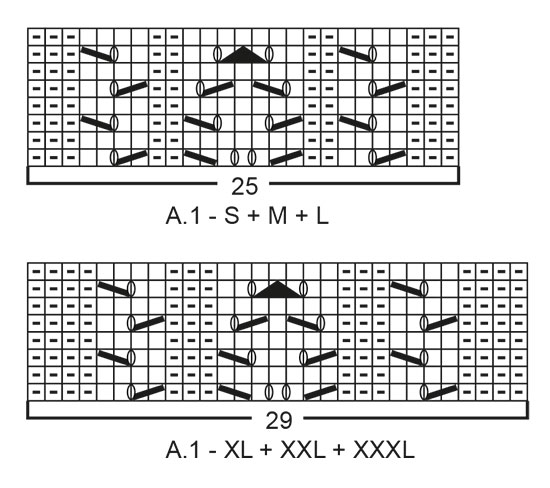
|
||||||||||||||||||||||||||||||||||

|
||||||||||||||||||||||||||||||||||

|
||||||||||||||||||||||||||||||||||
|
Have you made this or any other of our designs? Tag your pictures in social media with #dropsdesign so we can see them! Do you need help with this pattern?You'll find tutorial videos, a Comments/Questions area and more by visiting the pattern on garnstudio.com. © 1982-2024 DROPS Design A/S. We reserve all rights. This document, including all its sub-sections, has copyrights. Read more about what you can do with our patterns at the bottom of each pattern on our site. |
||||||||||||||||||||||||||||||||||









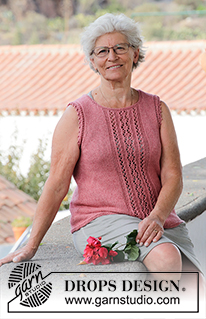
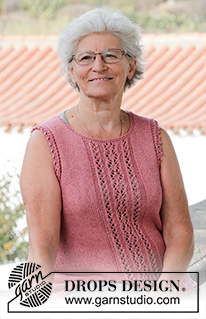















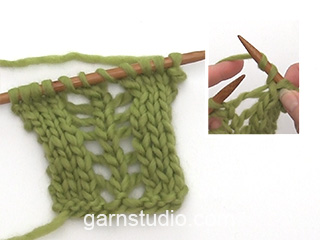



















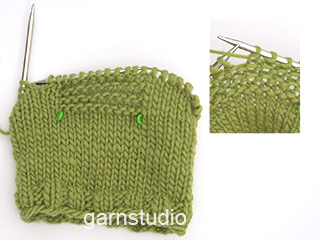




























Comments / Questions (18)
Tack har hittat alla delarna nu!
20.03.2024 - 17:03Cherelyn DROPS 191-16: Var hittar jag beskrivningen till picotkanten för topp och pannband? Tack på förhand!
20.03.2024 - 16:47Bakstykket/ forstykket. Skal begynnelsen på pinnen både på rettsiden og vrangsiden starte med A3? Rad 2 og 4 på vr,1 og 3 på r siden. Skal likeså alle pinner slutte med A2?
02.07.2023 - 02:30DROPS Design answered:
Hei Britt Mari Ja, første pinne strikkes fra vrangen (både bakstykket og forstykket) og det startes med diagram A.3 og sluttes med A.2. Tråden ble klippet da bolen var ferdig strikket. Rad 2 + 4 i diagrammene er fra vrangen og leses fra venstre mot høyre, mens rad 1+ 3 er fra retten og leses fra høyre mot venstre. mvh DROPS Design
03.07.2023 - 10:59Hva er forklaring på opp/ned trekanten i sidene på A2 og A3 - jeg strikker pannebånd.
18.01.2023 - 20:32DROPS Design answered:
Hei Torunn, Det symbolet er en 'v' og betyr felle av en maske. God fornøyelse!
22.01.2023 - 12:45Buongiorno ho bisogno di aiuto per i diagrammi A2 e A3 non capisco il simbolo del triangolo con la punta in basso come faccio ad intrecciare una maglia? Vi riferite alle diminuzioni degli scalfi o invece vanno accavallate le due maglie in una lavorate al giro precedente e se si come faccio passo una maglia senza lavorare, lavoro la secona e accavallo la prima? Grazie
15.07.2022 - 09:55DROPS Design answered:
Buonasera Irene, deve proseguire come indicato e intrecciare le maglie. Buon lavoro!
10.08.2022 - 22:41Üdvözlöm! A MINTALEÍRÁSBAN az áll, hogy "LUSTAKÖTÉS (körben kötve): 1 borda = két kör 1 kör sima szemekkel, 1 kör fordított szemekkel." A TESTRÉSZNÉL meg az, hogy "Kössünk 2 bordányit (= 8 sor / kör) LUSTAKÖTÉSSEL- olvassuk el a fenti magyarázatot. Ezután 1 kört kötünk sima szemekkel." Szerintem, ha 1 borda = 2 kör, akkor 2 borda = 4 kör és nem 8. Most milyen széles a minta 4 vagy 8 kör?
08.07.2022 - 12:54Jag stickar just nu Cherelyn och har kommit så långt att jag maskat av för ärmhål MEN då förstår jag inte förklaringen på diagrammet. det är inte översatt fr norska. snälla, kan ngn ge en översättning så jag får mitt linne färdigt
30.06.2022 - 09:12DROPS Design answered:
Hej! Nu är diagramsymbolerna översatta till svenska, tack för info! Mvh DROPS Design
30.06.2022 - 12:00Hello! This looks like a lovely pattern. I am trying to follow diagrams b4 I start. I cannot get A2 and A3 to work out. So, always from left to right? (instead of R-L). Since now flat reverse stitch for r2 and 4 or R1 and 3? And when I get to "knit YO twisted" I do not have a YO from the previous row. Can you perhaps write out instead of diagram? I have tried multiple times and just can't figure out where it should be backwards.... Help please!!! Thanks much! :-)
03.03.2021 - 17:58DROPS Design answered:
Dear Mrs Gonzalez, on first row on back piece work from WS: A.3 (starting with row 2 and reading L-R), and finish with A.2 (work row 2 and read L-R), turn and n ow work from RS: A.2 (= row 3, read R-L), and finish with A.3 (row 3 = read R-L) and continue like this, ie from WS read diagrams from L-R and from RS from R-L. Happy knitting!
04.03.2021 - 07:39Je suis en train de réaliser ce beau modèle. J'ai un souci avec la taille. Bien que l'échantillon corresponde au modèle, la taille est beaucoup trop grande !!! Je fais habituellement un XL et ici le L est encore beaucoup trop grand. Y a t'il d'autres personnes dans mon cas ? Merci !
04.08.2020 - 22:32DROPS Design answered:
Bonjour Edith, pensez à vérifier les mesures indiquées par le schéma pour choisir la taille, si votre échantillon/tension sont justes, alors vous obtiendrez les mesures indiquées pour la taille choisie dans le schéma. Bon tricot!
05.08.2020 - 08:00Estoy con dificultad para entender los diagramas A2 y A3. ¿Por qué son distintos? ¿No va a quedar un lado diferente del otro? La blusa es muy bonita, pero esta parte me está costando bastante.
01.07.2020 - 00:29DROPS Design answered:
Hola Jaqueline. Trabajamos los dos diagramas para que el patrón quede simétrico.
01.07.2020 - 20:45